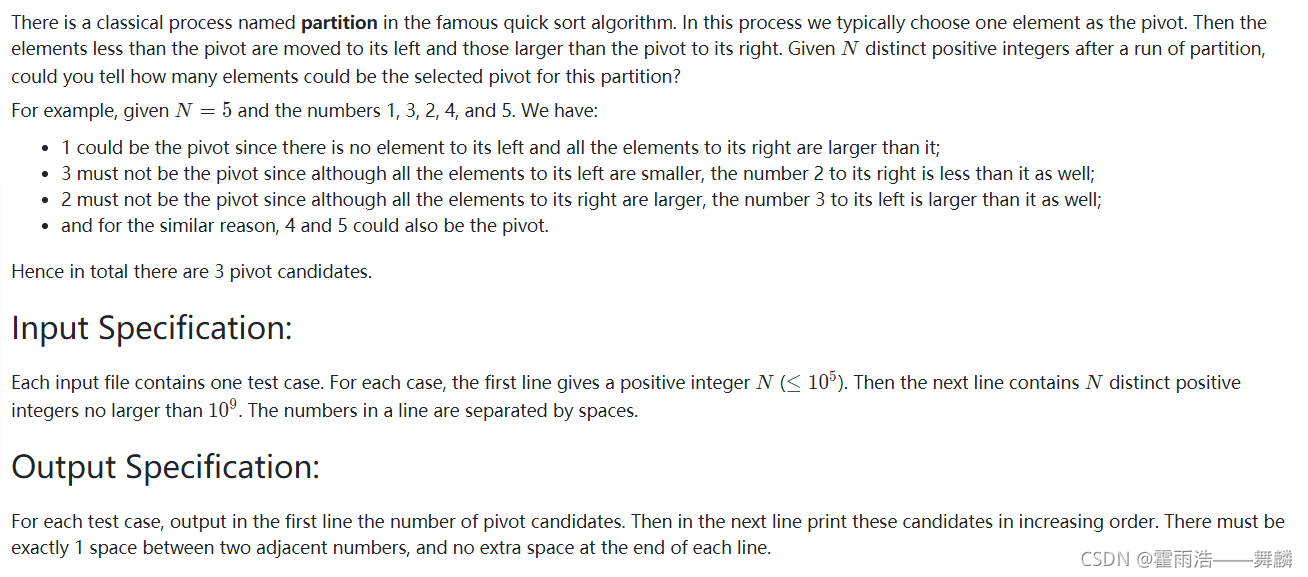
#include<bits/stdc++.h>
using namespace std;
const int maxn=1e5+10;
const int inf=0x3fffffff;
int a[maxn],leftmax[maxn],rightmin[maxn];
int ans[maxn],num=0;
int main()
{
int n;
scanf("%d",&n);
for(int i=0;i<n;i++)
{
scanf("%d",&a[i]);
}
leftmax[0]=0;
for(int i=1;i<n;i++)
{
leftmax[i]=max(leftmax[i-1],a[i-1]);
}
rightmin[n-1]=inf;
for(int i=n-2;i>=0;i--)
{
rightmin[i]=min(rightmin[i+1],a[i+1]);
}
for(int i=0;i<n;i++)
{
if(leftmax[i]<a[i]&&rightmin[i]>a[i])
{
ans[num++]=a[i];
}
}
printf("%d\n",num);
for(int i=0;i<num;i++)
{
printf("%d",ans[i]);
if(i!=num-1) printf(" ");
}
printf("\n");
}






 本文介绍了一种使用C++实现的区间搜索算法,通过维护左右边界值,找出数组中满足条件的元素。核心在于利用动态规划思想找到左最大值和右最小值,用于解决特定问题中的元素筛选。
本文介绍了一种使用C++实现的区间搜索算法,通过维护左右边界值,找出数组中满足条件的元素。核心在于利用动态规划思想找到左最大值和右最小值,用于解决特定问题中的元素筛选。
















 555
555

 被折叠的 条评论
为什么被折叠?
被折叠的 条评论
为什么被折叠?








